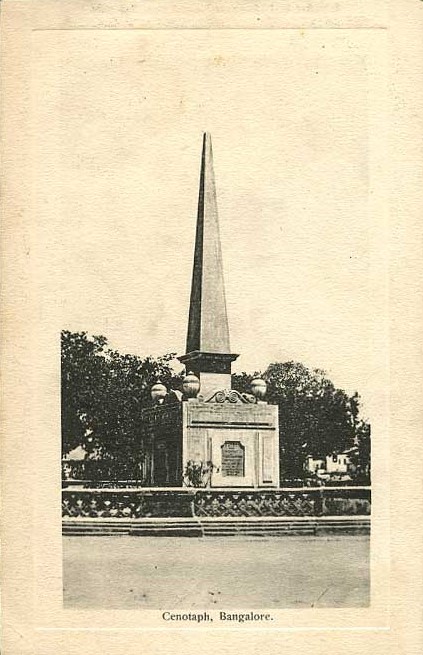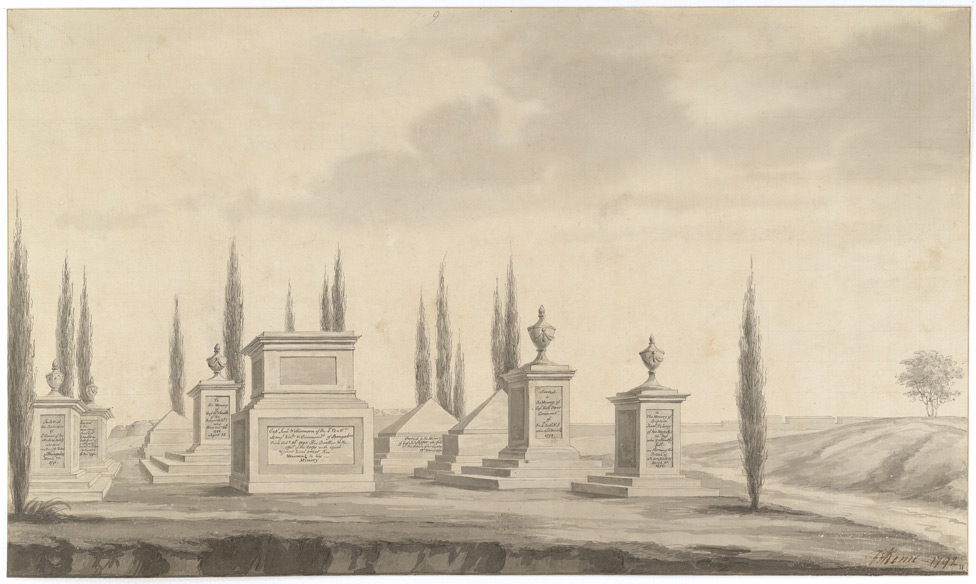Fort Church, Bangalore on:
[Wikipedia]
[Google]
[Amazon]
The Fort Church, Bangalore, was a church located within

 The Fort Cemetery, where the officers who fell in the
The Fort Cemetery, where the officers who fell in the 
Bangalore Fort
Bangalore Fort began in 1537 as a mud fort. The builder was Kempe Gowda I, a vassal of the Vijaynagar Empire and the founder of Bangalore. Hyder Ali in 1761 replaced the mud fort with a stone fort and it was further improved by his son Tipu Su ...
. The church was demolished to make place for the construction of the Vani Vilas Hospital. The Government of Mysore
The Government of Karnataka, abbreviated as, GoK, or simply Karnataka Government, is a democratically-elected state body with the governor as the ceremonial head to govern the Southwest Indian state of Karnataka. The governor who is appointed ...
then allotted land in Chamrajpet for construction of a new church, St. Luke's Church, Bangalore. Early records refer to the Fort Church as the Drummer's Chapel, constructed by British soldiers after the fall of Tippu Sultan. The Fort Church, Bangalore was the first protestant
Protestantism is a Christian denomination, branch of Christianity that follows the theological tenets of the Reformation, Protestant Reformation, a movement that began seeking to reform the Catholic Church from within in the 16th century agai ...
church to be raised in Bangalore
Bangalore (), officially Bengaluru (), is the capital and largest city of the Indian state of Karnataka. It has a population of more than and a metropolitan population of around , making it the third most populous city and fifth most ...
.
History
The Fort Church, Bangalore was among 15 churches built by theGovernment of Madras
A government is the system or group of people governing an organized community, generally a state.
In the case of its broad associative definition, government normally consists of legislature, executive, and judiciary. Government is a ...
before 1833, when there were no special rules with regards to building churches. The Military board of the Madras Army
The Madras Army was the army of the Presidency of Madras, one of the three presidencies of British India within the British Empire.
The presidency armies, like the presidencies themselves, belonged to the East India Company until the Government ...
approved the construction. The Church raised in 1807 was for the use of the British troops posted in the Bangalore Fort
Bangalore Fort began in 1537 as a mud fort. The builder was Kempe Gowda I, a vassal of the Vijaynagar Empire and the founder of Bangalore. Hyder Ali in 1761 replaced the mud fort with a stone fort and it was further improved by his son Tipu Su ...
.
The Fort Church, Bangalore was visited by Bishop Turner, travelling from Madras to Bangalore.
The Fort Church was no longer used by 1836, when it was visited by Bishop Corrie, as there was only one chaplain for Bangalore, and he could not travel from the Bangalore Civil and Military Station
Bangalore (), officially Bengaluru (), is the capital and largest city of the Indian state of Karnataka. It has a population of more than and a metropolitan population of around , making it the third most populous city and fifth most ...
to the Bangalore Fort. The church building was then used by the Madras Army
The Madras Army was the army of the Presidency of Madras, one of the three presidencies of British India within the British Empire.
The presidency armies, like the presidencies themselves, belonged to the East India Company until the Government ...
for other purposes. In 1836, the army moved out of the Fort, and handed it over to the Government of Mysore
In 1857, a small garrison of the Madras Army was stationed again at the Bangalore Fort, and the Fort Church was re-opened.
Architecture
The church was modest, unlike other churches in Bangalore of the period. It resembled a barrack, with a tiled roof supported by beams. The Church was referred to as the 'Little Church'. When the Fort Church was demolished, some of the items were re-used in building St. Luke's Church, Chamrajpet. This includes the church bell, bearing the inscription 'Madras Mint 1868'.Fort Cemetery

 The Fort Cemetery, where the officers who fell in the
The Fort Cemetery, where the officers who fell in the Siege of Bangalore
The siege of Bangalore was a siege of the town and fortifications of Bangalore during the Third Anglo-Mysore War by forces of the British East India Company, led by Charles, Earl Cornwallis against a Mysorean garrison, while Tipu Sultan, Mysore ...
were buried, is illustrated in Robert Home's Book, ''Select Views in Mysore, the country of Tippoo Sultan'', published by Robert Bowyer, London, 1794. Home's painting shows the graves of Captains James Smith, James Williamson, John Shipper, Nathaniel Daws and Jeremiah Delany, Lieutenant Conan and Lieutenant-Colonel Gratton. As recorded in 1895, The cemetery was located just outside Fort Church, with the church being responsible for its maintenance. The cemetery had cypress trees, rose bushes and flowers. The Government of Mysore, had constructed a wall and gate for the cemetery.
However, as recorded in 1912 by Rev. Frank Penny in his book ''The Church in Madras: Volume II'', the cemetery no longer existed. The record of the officers who fell in the battle for the Bangalore Fort in 1791, were transferred to the cenotaph, raised by the Government of Mysore
The Government of Karnataka, abbreviated as, GoK, or simply Karnataka Government, is a democratically-elected state body with the governor as the ceremonial head to govern the Southwest Indian state of Karnataka. The governor who is appointed ...
.
The 35 feet tall cenotaph pillar was raised in memory of the lives lost in the Siege of Bangalore, opposite to the present Corporation Building, and Hudson Memorial Church. Kannada activists led by Vatal Nagaraj and others made violent demands to demolish the cenotaph. As a result of these protests, the Bangalore City Corporation demolished the memorial on 28 October 1964, and the name of the road was also changed from Cenotaph Road to Nrupathunga Road. The engraved stones were destroyed, and not even a single stone remains. A small piece of the Cenotaph has been placed as a bench in the Corporation Office. Historians, and heritage lovers of Bangalore protested the destruction of history. A blogger, Samyuktha Harshitha, called it as 'official vandalism', comparing it with the destruction of the Bamiyan statues.

Fort school
The Fort Church, managed the Fort School from the end of the 19th century. The church provided furniture, study maps, and managed accounts, all overseen by the Fort Church School Committee. The Diocesan Magazine, records a school function being organised for current and former students on 29 December 1909, with Miss. Rozario as head mistress (serving from 1893 to 1909), with prizes distributed by E A Hill, School inspector and Rev. G H Lamb. In 1911, the head mistress was a Miss Page, as recorded by the Diocesan Magazine. There still exists a Fort School at Chamarajpet, with a building dating to 1907. Once called the English Vernacular School, the Fort School is located oppositeBangalore Medical College
Bangalore Medical College and Research Institute (BMCRI), (Beṅgaḷūru Vaidyakīya Mahāvidyālaya mattu Sanśōdhanā Sansthé) formerly Bangalore Medical College (BMC), is a medical college run by the Government of Karnataka. It is located ...
, near Tipu Sultan's Summer Palace
Tipu Sultan's Summer Palace, in Bangalore, India, is an example of Indo-Islamic architecture and was the summer residence of the Mysorean ruler Tipu Sultan. Hyder Ali commenced its construction within the walls of the Bangalore Fort, and it was ...
. The School was built in 1907, and had among its students freedom fighter H S Doreswamy, cricketer G R Vishwanath, statesman V S Krishna Iyer, Mysore Maharaja Jayachamarajendra Wadiyar
Jayachamarajendra Wadiyar (18 July 1919 – 23 September 1974) was the 25th Maharaja of Mysore from 1940 to 1950, who later served as the governor of Mysore and Madras states.
Early life
Jayachamarajendra Wadiyar was born on 18 July 1919 at ...
, former Chief Minister of Karnataka Kengal Hanumanthaiah
Kengal Hanumanthaiah (14 February 1908 – 1 December 1980), also spelt as Kengal Hanumanthaiya, was the second Chief Minister of Karnataka (then, Mysore State) from 30 March 1952 to 19 August 1956. He contributed to the construction of Vidhana ...
and bureaucrat Narasimha Rao. The building is being studied by INTACH
The Indian National Trust for Art and Cultural Heritage (INTACH) is a non-profit charitable organisation registered under the Societies Registration Act, 1860.
In 2007, the United Nations awarded INTACH a special consultative status with Unite ...
for possible renovation. The Fort School is the oldest high school in the Bangalore pete area. The school at present has 186 students in English Medium and 81 studying in Kannada Medium. Majority of the English Medium students are from Tamil
Tamil may refer to:
* Tamils, an ethnic group native to India and some other parts of Asia
** Sri Lankan Tamils, Tamil people native to Sri Lanka also called ilankai tamils
**Tamil Malaysians, Tamil people native to Malaysia
* Tamil language, nati ...
and Telugu
Telugu may refer to:
* Telugu language, a major Dravidian language of India
*Telugu people, an ethno-linguistic group of India
* Telugu script, used to write the Telugu language
** Telugu (Unicode block), a block of Telugu characters in Unicode
S ...
families, studying all subjects in English, English language, mother tongue language and Kannada
Kannada (; ಕನ್ನಡ, ), originally romanised Canarese, is a Dravidian language spoken predominantly by the people of Karnataka in southwestern India, with minorities in all neighbouring states. It has around 47 million native s ...
as third language.
Demolition
The Government of Mysore built Victoria Hospital in 1901, insideBangalore Fort
Bangalore Fort began in 1537 as a mud fort. The builder was Kempe Gowda I, a vassal of the Vijaynagar Empire and the founder of Bangalore. Hyder Ali in 1761 replaced the mud fort with a stone fort and it was further improved by his son Tipu Su ...
. In 1915, the government constructed Minto Eye Hospital
Minto Ophthalmic Hospital is a government run specialty hospital in Bangalore
Bangalore (), officially Bengaluru (), is the capital and largest city of the Indian state of Karnataka. It has a population of more than and a metropoli ...
on the same campus. In the 1920s the Mysore Government wanted to add a maternity hospital inside Bangalore Fort
Bangalore Fort began in 1537 as a mud fort. The builder was Kempe Gowda I, a vassal of the Vijaynagar Empire and the founder of Bangalore. Hyder Ali in 1761 replaced the mud fort with a stone fort and it was further improved by his son Tipu Su ...
, and approached the Church of England
The Church of England (C of E) is the established Christian church in England and the mother church of the international Anglican Communion. It traces its history to the Christian church recorded as existing in the Roman province of Britain ...
for land on which the Fort Church was standing. The Government offered an alternative site at Hardinge Road, Chamarajpet and a compensation of INR 7,000, which was accepted by the church. The Fort Church was demolished around 1932, with the new church named as St. Luke's Church built with contributions from the Government of Mysore, Government of India, Diocese of Madras and other donors amounting to INR 36,315.
References
{{reflist, 2 Destroyed churches in India Redundant churches Churches in Bangalore Anglican church buildings in India 19th-century Anglican church buildings Presbyterianism in India